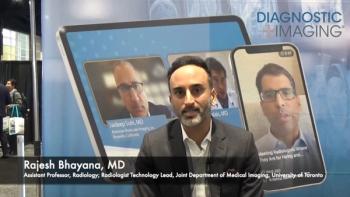
Meta-Analysis Assesses Impact of PSMA PET Imaging on Treatment Outcomes for Prostate Cancer Recurrence
In an interview at the recent Radiological Society of North America (RSNA) conference, Alex Pozdnyakov, M.D. discussed findings from a new meta-analysis, which revealed that prostate-specific membrane antigen/positron emission tomography (PSMA PET) imaging in patients with prostate cancer recurrence led to treatment changes that resulted in a pooled 60.2 percent rate of prostate cancer-free survival at 20 months.
Noting a lack of data on the relationship between prostate-specific membrane antigen/positron emission tomography (PSMA PET) imaging and clinical outcomes, researchers shared significant findings from a new meta-analysis, presented at the Radiological Society of North America (RSNA) conference, looking at the impact of the nuclear medicine modality upon the management and treatment outcomes of patients with prostate cancer recurrence.
The meta-analysis involved 34 studies and data from a total of 3,680 men who had definitive primary therapy for prostate cancer and subsequent PSMA PET imaging.
The researchers found positive PSMA PET findings in 68.2 percent of men for recurrent
(Editor’s note: For related articles on prostate cancer imaging, see “
Alex Pozdnyakov, M.D., the lead author of the study, discussed the findings of the study during a recent interview at the
“In terms of clinical results, we found that approximately 25 percent oof patients had a complete response and around 60 percent of patients had biochemical-recurrence free survival at the median of 20 months, which was varied across different studies but still demonstrates a durable response to metastasis-directed treatment based on the findings from PSMA PET (imaging),” noted Dr. Pozdnyakov, who is affiliated with the Department of Radiology at McMaster University in Hamilton, Ontario, Canada.
For more insights from Dr. Pozdnyakov, watch the video below.
Newsletter
Stay at the forefront of radiology with the Diagnostic Imaging newsletter, delivering the latest news, clinical insights, and imaging advancements for today’s radiologists.




























